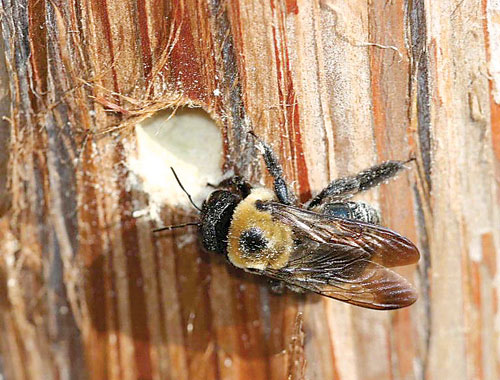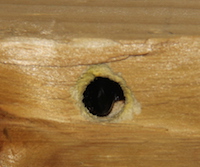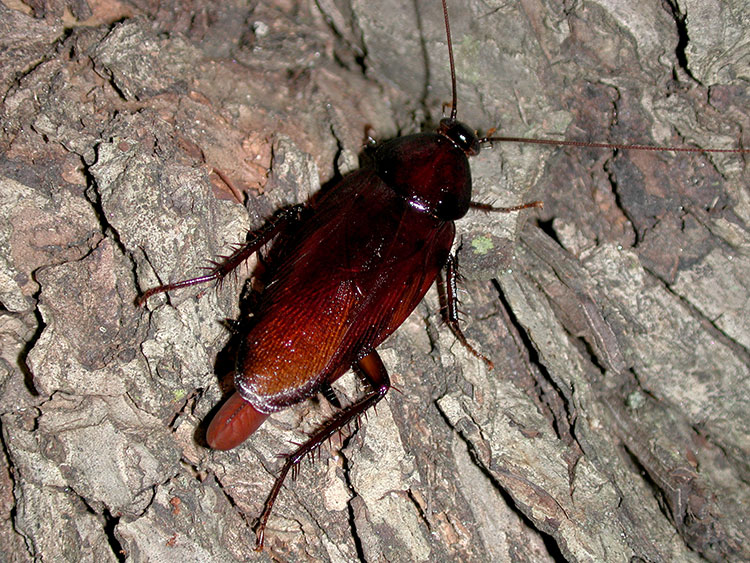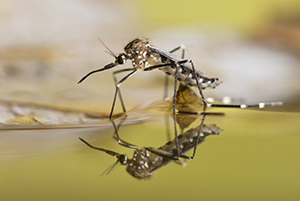Tiny piles of sawdust found in random spots are likely caused by large wood-drilling insects called carpenter bees.
Carpenter bees are large, black and yellow bees often seen flying around the wooden eaves of houses, wooden decks and wooden fences. They are often mistaken for bumblebees, but unlike bumblebees they have a black shiny tail section.
Drilling half-inch holes
The carpenter bee got its name because of its ability to tunnel in wood with its jaws. The bees make half-inch round holes in wood.
Sawdust can be found on the ground or on the surface of an object beneath the hole. The holes go a short distance into the wood and run horizontally with the grain for at least six inches or more.
Several bees may use the same entrance hole and branch off in different directions from the main tunnel. The tunnels may go for several feet in the wood if the same entrance hole is used for several years.
Trusses, overhangs, wooden decks and other exposed wood on houses attract the bees. Wood that is treated or painted is less preferred but still susceptible to attacks.
They don't eat wood
Unlike termites, carpenter bees do not consume the wood as food. Instead, they gnaw tunnels to create nesting sites.
Carpenter bees overwinter in tunnels. They emerge from these tunnels in early spring.
Female bees lay eggs in the tunnels until the tunnels are full. Male bees do not drill tunnels, but they are protective of their territory. The male is distinguished from the female by a white spot on the front of the face.
Female carpenter bees seldom sting but will if disturbed or handled. Male carpenter bees cannot sting, but they often become aggressive and frighten people by flying about their heads.
Carpenter bee larvae are large and noisy. The noise they make may attract woodpeckers. The woodpeckers do further damage to wood when hunting for the larva. Woodpeckers seen on the eave of homes are more than likely in search of the carpenter bee larva.
Adult bees die within a few weeks.
Three control methods recommended
At least three methods can be used to control carpenter bees: 1) aerosol treatments of insecticides applied directly to adult carpenter bees, 2) residual surface and gallery treatments with insecticides and 3) preventive treatments such as painting wood with thick coats of oil based or latex paints.
Several days following the preferred treatment, after carpenter bee activity has ceased, plug holes with dowel rods, plastic wood, caulk or with other suitable materials. If carpenter bees continue to attack the wood, additional residual insecticide treatments may be required at weekly or twice weekly intervals. Painting the wood with an oil base or polyurethane paint will discourage the bees, but will not make the wood bee-proof.
For more information on handling urban pests, contact your local University of Georgia Cooperative Extension office at 1-800-ASK-UGA1.









